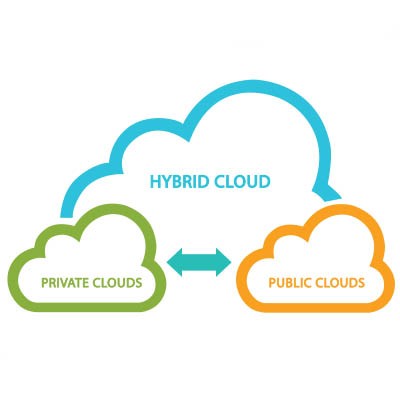If you want to discuss the single most influential technology for the modern era, there’s a lot of competition—but the cloud is a serious contender. Through the cloud, your organization can pull off feats previously impossible for all but the largest and most profitable companies. Today, we want to look at how small businesses use the cloud and how you benefit from the various models.
JS Business Solutions Blog
In order to survive in today’s business world, your organization needs to be adaptable and flexible to new situations. You might have to take on the persona of a bookkeeper, HR, and other important roles for your business. You can add “IT decision maker” to that list, as 95% of small businesses in the US utilize some kind of computing to keep the business running smoothly.
The cloud has made quite a splash, even in our everyday lives. Think about it: how else would all those streaming services work, if it wasn’t for the cloud? Entertainment at our fingertips aside, we’re big fans of cloud services for business purposes, and there are a few very good reasons for that.
Six, to be specific.
When it comes to getting the most value out of your business’ software infrastructure, it’s hard to argue with Software as a Service (SaaS). In fact, there are many solutions that are fueled by SaaS that power some of the world’s most lucrative companies. Let’s look at some examples of SaaS applications that can help even a small business revolutionize operations to save time and earn more profits simultaneously.
TV shows and movies captivate people of all ages, walks of life, and socio-economic backgrounds. They can put viewers in places in time and situations that they could only dream about. Like many things in our society, there are varying roles that technology plays in the entertainment industry. Let’s take a look at the role technology plays in the creation of the entertainment that we enjoy every day.
Most businesses leverage the cloud in at least some capacity, whether cloud-based apps or cloud-based infrastructure. In any case, using the cloud comes with inherent security questions that must be addressed during the planning, implementation, and launch phases of any solution. Let’s go over some of the ways you might protect data and applications stored in the cloud.
Technology has become a fundamental need for businesses of all sizes, with even small businesses needing to seek out options to cover their shifting needs. Fortunately, this technology has also become more reliable and readily available…and as a result, small businesses have more opportunities than ever to give their operations a welcome boost.
Cloud-hosted computing has been around for quite some time, but it has never been as accessible as it is today. It is now a commonly used resource for almost any type of business. In fact, the growth of cloud-based computing suggests that we are staring at a cloud-hosted future. Today, we wanted to discuss the cloud and how it has become the go-to solution for growing businesses.
The cloud can be a tricky beast to tame for your business, and it is mostly because of all the options you have at your fingertips to help your organization be as successful as possible with it. Let’s discuss some of the questions you need to ask to ensure you get the best value out of your cloud-based solutions.
The cloud provides businesses with all kinds of ways to be more productive throughout the workday, and while it’s great in most cases for companies that want to be more intentional with their infrastructures and budgets, there are certain cloud solutions that will be effective no matter what industry or professional endeavors you pursue.
Exploring how to fuel your business’ data needs typically comes down to whether or not you have the outstanding capital to purchase and manage your own IT infrastructure or if you are looking to utilize utility computing in the cloud to facilitate all of your business’ IT needs. This week, we thought we’d briefly discuss the pros and cons of cloud computing for your business and how much money, if any, moving to the cloud can save you.
Cloud computing has been a major topic of discussion in the business world, but many IT professionals have been skeptical of the practice over the years due to security concerns and issues with management. However, technology advancements have allowed businesses to implement cloud computing in previously unforeseen ways, leading to more convenient, flexible, and affordable solutions as a whole.
Your desktop infrastructure is one of the most important parts of your organization, and there are several ways to manage it. One way is through Desktop-as-a-Service, an option that can help you move away from the traditional workstation and embrace a new technology management philosophy. How might you get value out of this service? Let’s take a look at what makes DaaS so special.
If you have to rely on remote workers as a small business, you might fear what they represent to your operations: a lack of control, security challenges, and of course, productivity issues. However, in today’s remote workplace, it is important to acknowledge that remote workers played a critical role in saving countless organizations throughout the course of the pandemic.
The cloud has provided organizations with countless ways to innovate and improve operations, but for those who are just now jumping on this great opportunity, you might have some questions about how to get the most out of the cloud or how to even get started. Let’s discuss some of the major benefits of cloud computing, as well as why it’s critical to consider it in the years to come.
Each business uses a certain amount of technology to get things done, but today, no technology is as important to businesses as the Internet. You’ve begun to see businesses of all sizes spending thousands of dollars a month on Software-as-a-Service platforms designed to get workers the tools they need without placing undue pressure on a company’s capital budget. Today, we will talk about another cloud-based platform that is growing rapidly: Infrastructure-as-a-Service.




















